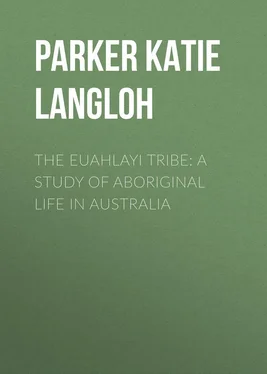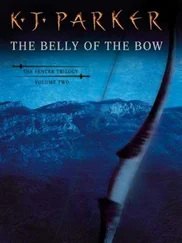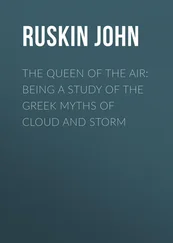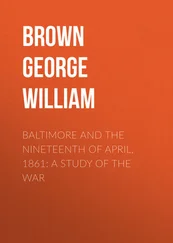Katie Parker - The Euahlayi Tribe - A Study of Aboriginal Life in Australia
Здесь есть возможность читать онлайн «Katie Parker - The Euahlayi Tribe - A Study of Aboriginal Life in Australia» — ознакомительный отрывок электронной книги совершенно бесплатно, а после прочтения отрывка купить полную версию. В некоторых случаях можно слушать аудио, скачать через торрент в формате fb2 и присутствует краткое содержание. Жанр: foreign_antique, foreign_prose, на английском языке. Описание произведения, (предисловие) а так же отзывы посетителей доступны на портале библиотеки ЛибКат.
- Название:The Euahlayi Tribe: A Study of Aboriginal Life in Australia
- Автор:
- Жанр:
- Год:неизвестен
- ISBN:нет данных
- Рейтинг книги:5 / 5. Голосов: 1
-
Избранное:Добавить в избранное
- Отзывы:
-
Ваша оценка:
- 100
- 1
- 2
- 3
- 4
- 5
The Euahlayi Tribe: A Study of Aboriginal Life in Australia: краткое содержание, описание и аннотация
Предлагаем к чтению аннотацию, описание, краткое содержание или предисловие (зависит от того, что написал сам автор книги «The Euahlayi Tribe: A Study of Aboriginal Life in Australia»). Если вы не нашли необходимую информацию о книге — напишите в комментариях, мы постараемся отыскать её.
The Euahlayi Tribe: A Study of Aboriginal Life in Australia — читать онлайн ознакомительный отрывок
Ниже представлен текст книги, разбитый по страницам. Система сохранения места последней прочитанной страницы, позволяет с удобством читать онлайн бесплатно книгу «The Euahlayi Tribe: A Study of Aboriginal Life in Australia», без необходимости каждый раз заново искать на чём Вы остановились. Поставьте закладку, и сможете в любой момент перейти на страницу, на которой закончили чтение.
Интервал:
Закладка:
On these grounds it appears that the hereditary totem is the earlier, and that the Arunta usage is the result of the special and inseparable superstition about the sacred stones. It may be a relatively recent complication of and addition to the theory of reincarnation. Meanwhile, the belief and usage produce an unique effect. The Arunta and Kaitish, we saw, are so advanced socially that they possess not two, or four, but eight matrimonial classes. The tribe is divided into two sets of four classes each, and no person in A division (nameless) of four classes may marry another person of any one of these four, but must marry a person of a given class among the four in B division (nameless). The succession to the class is hereditary in the mate line. But any person among the Arunta, contrary to universal custom elsewhere, may marry another person of his or her own totem, if that person be in the right class of the opposite division. Nowhere else can a person of division A and totem Grub find a Grub to marry in the opposite division B. But this is possible among the Arunta and Kaitish, because their totems are acquired by pure accident, are not hereditary, and all totems exist, or may exist, in division A and also in division B.
Mr. Frazer argues that the Arunta is the earlier state of affairs. He supposes that men acquired their totems, at first, by local accident, before they had laid any restrictions on marriage. Later, they divided their tribe, first into two, then into four, then into eight classes; and every one had to marry out of his class, or set of classes. All other known tribes introduced these restrictions after totems had been made hereditary. On passing the restrictive marriage law, they merely drafted people of one set of hereditary totems into one division, all the other totem kins into the other division. But the Arunta had not made totems hereditary, but accidental, so all the children of one crowd of mothers were placed in division A, all other children in division B. The mothers in each division would have children of all the totems, and thus the same totems now appeared in both of the exogamous divisions. If a man married into his lawful opposite class, the fact that the woman was of the same totem made no difference.
I have offered quite an opposite explanation. Arunta totems were, originally, hereditary among the Arunta, as everywhere else, and no totem occurred in both exogamous divisions. The same totems, later, got into both divisions as the result of the later and isolated belief in reincarnation PLUS the sacred haunted stones. That superstition has left the Kaitish PRACTICE of marriage still almost untouched. A Kaitish MAY, like an Arunta, marry a woman of his own totem, but he scarcely ever does so. The old prohibition, extinct in law, persists in custom; unless we say that the Kaitish are now merely imitating the usual practice of the rest of the totemic races of the world.
Moreover, even among the Arunta, certain totems greatly preponderate in each of the two exogamous intermarrying divisions of the tribe. This must be because the present practice has not yet quite upset the ancient usage, by which no totem ever occurred in both divisions. There is even an Arunta myth asserting that this was so, but it is, of course, of no historical value as evidence. Here it is proper to give Mr. Frazer's contrary theory in his own words: —
'This [Arunta] mode of determining the totem has all the appearance of extreme antiquity. For it ignores altogether the intercourse of the sexes as the cause of offspring, and further, it ignores the tie of blood on the maternal as well as the paternal side, substituting for it a purely local bond, since the members of a totem stock are merely those who gave the first sign of life in the womb at one or other of certain definite spots. This form of totemism, which may be called conceptional or local to distinguish it from hereditary totemism, may with great probability be regarded as the most primitive known to exist at the present day, since it seems to date from a time when blood relationship was not yet recognised, and when even the idea of paternity had not yet presented itself to the savage mind. Moreover, it is hardly possible that this peculiar form of local totemism, with its implied ignorance of such a thing as paternity at all, could be derived from hereditary totemism, whereas it is easy to understand how hereditary totemism, either in the paternal or in the maternal line, could be derived from it. Indeed, among the Umbaia and Gnanji tribes we can see at the present day how the change from local to hereditary totemism has been effected. These tribes, like the Arunta and Kaitish, believe that conception is caused by the entrance into a woman of a spirit who has lived in its disembodied state, along with other spirits of the same totem, at any one of a number of totem centres scattered over the country; but, unlike the Arunta and Kaitish, they almost always assign the father's totem to the child, even though the infant may have given the first sign of life at a place haunted by spirits of a different totem. For example, the wife of a snake man may first feel her womb quickened at a tree haunted by spirits of goshawk people; yet the child will not be a goshawk but a snake, like its father. The theory by which the Umbaia and Gnanji reconcile these apparently inconsistent beliefs is that a spirit of the husband's totem follows the wife and enters into her wherever an opportunity offers, whereas spirits of other totems would not think of doing so. In the example supposed, a snake spirit is thought to have followed up the wife of the snake man and entered into her at the tree haunted by goshawk spirits, while the goshawk spirits would refuse to trespass, so to say, on a snake preserve by quartering themselves in the wife of a snake man. This theory clearly marks a transition from local to hereditary totemism in the paternal line. And precisely the same theory could, MUTATIS MUTANDIS, be employed to effect a change from local to hereditary totemism in the maternal line; it would only be necessary to suppose that a pregnant woman is always followed by a spirit of her own totem, which sooner or later effects a lodgement in her body. For example, a pregnant woman of the bee totem would always be followed by a bee spirit, which would enter into her wherever and whenever she felt her womb quickened, and so the child would be born of her own bee totem. Thus the local form of totemism, which obtains among the Arunta and Kaitish tribes, is older than the hereditary form, which is the ordinary type of totemism in Australia and elsewhere, first, because it rests on far more archaic conceptions of society and of life; and, secondly, because both the hereditary kinds of totemism, the paternal and the maternal, can be derived from it, whereas it can hardly be derived from either of them.'
This argument appears to take for granted that the conception of primal ancestral spirits, perpetually reincarnated, is primitive. But, in fact, we seem to know it, among Australian tribes, only in these which have advanced to the possession of eight classes, and have made 'the great step in progress' (if it is a great step), of descent of the totem in the paternal line. The Urabunna, with female descent of the totem, have, it is true, the belief in reincarnation. But they intermarry with the Arunta, borrow their sacred stones, and practise the same advanced rites and ceremonies. The idea may thus have been borrowed. On the other hand, the more pristine tribes of the south-east, with two or four exogamous divisions, and with female descent of the totem, have no known trace of the doctrine of reincarnation (except as displayed by the Euahlayi), and have no doubt that the father is the cause of procreation, save in the case of the Euahlayi, who believe that the Moon and the Crow 'make' the new children.
Читать дальшеИнтервал:
Закладка:
Похожие книги на «The Euahlayi Tribe: A Study of Aboriginal Life in Australia»
Представляем Вашему вниманию похожие книги на «The Euahlayi Tribe: A Study of Aboriginal Life in Australia» списком для выбора. Мы отобрали схожую по названию и смыслу литературу в надежде предоставить читателям больше вариантов отыскать новые, интересные, ещё непрочитанные произведения.
Обсуждение, отзывы о книге «The Euahlayi Tribe: A Study of Aboriginal Life in Australia» и просто собственные мнения читателей. Оставьте ваши комментарии, напишите, что Вы думаете о произведении, его смысле или главных героях. Укажите что конкретно понравилось, а что нет, и почему Вы так считаете.












